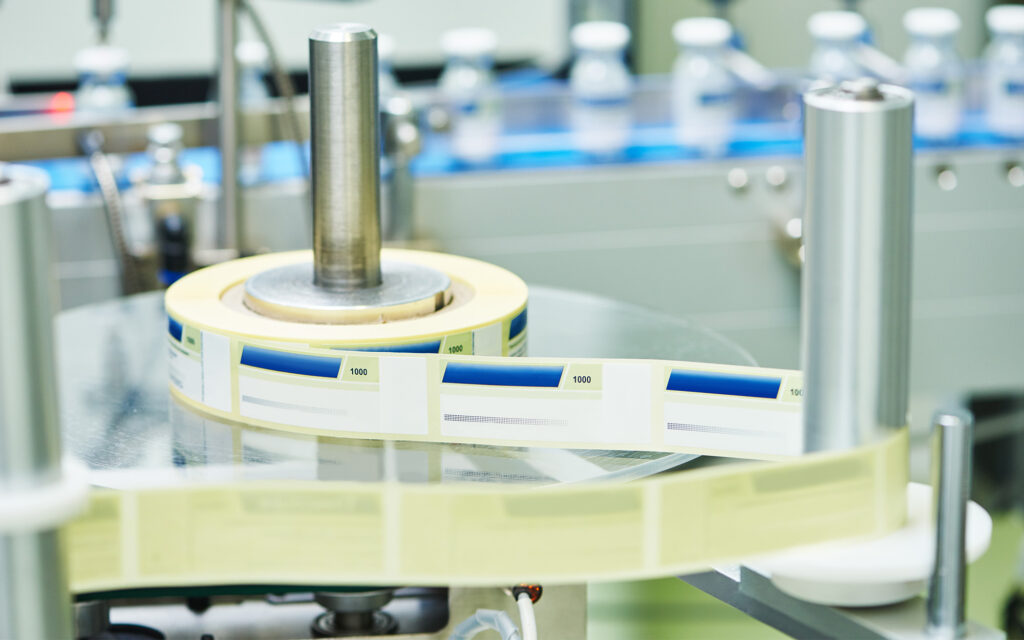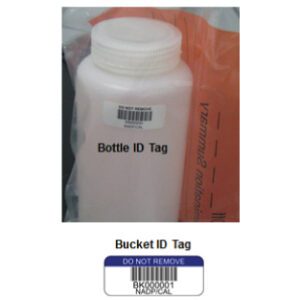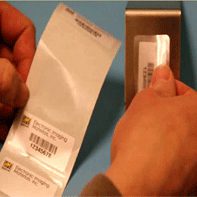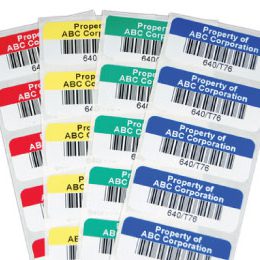Not all diagnostic machines have the same label demands, and choosing the right material can impact how well your labels perform. Whether you’re working with Hologic’s ThinPrep® 5000, the Panther Fusion®, or both, your label material needs to align with each system’s environment, process, and scanning precision.
Material selection impacts everything—how your labels hold up to heat and chemicals, how reliably they scan, and whether they stay in place from start to finish. In this guide, we’ll walk through the key factors that influence label performance across Hologic systems and how to choose custom medical labels that are engineered to meet those demands.

Why Label Material Matters in Diagnostic Labs
In any diagnostic setting, label failure is more than an inconvenience—it can compromise patient safety and stall workflows. Barcodes must remain scannable, labels must stay firmly attached, and printed data must resist smudging. Each piece of that performance puzzle hinges on one critical choice: your label material.
Custom medical labels are crafted to meet the unique handling, storage, and identification needs of specialized equipment like Hologic’s ThinPrep® and Panther Fusion® systems.
ThinPrep® 5000 vs. Panther Fusion®: Different Systems, Different Demands
Although both are advanced Hologic diagnostic systems, the ThinPrep® 5000 and Panther Fusion® operate in very different lab environments with different workflows, chemical exposures, and mechanical handling. That means their labeling needs aren’t interchangeable. Choosing the wrong material or adhesive—even if it’s “lab-grade”—can result in failures that interrupt automation, compromise sample traceability, or force relabeling. Let’s break down the unique demands of each system to help you make smarter label decisions.
ThinPrep® 5000
In ThinPrep® 5000 automates Pap test processing, handling high volumes of vials that often contain alcohol-based preservatives and undergo constant cleaning. Because the system’s robotic arms grip the vials tightly, label size, thickness, and placement all matter. Even a small label edge lift can interfere with vial handling.
Top Labeling Challenges:
- Frequent cleaning and exposure to alcohol or solvents
- Label placement must avoid interfering with robotic arms
- Needs compact, conformable labels that won’t curl or wrinkle
- Requires sharp barcodes that scan instantly during automation
Panther Fusion®
The Panther Fusion® is built for molecular testing and often processes samples exposed to a variety of temperatures, from refrigerated storage to warm incubation. These conditions stress both the adhesive and the printed image. Labels must withstand frequent scanning, movement through mechanical arms, and possible contact with chemicals or biological materials.
Top Labeling Challenges:
- Exposure to condensation, refrigeration, and freeze-thaw cycles
- Mechanical abrasion from high-speed handling
- Sterilization or chemical wipe-downs that damage weak labels
- Barcode distortion from curling or poor material memory
Understanding how each Hologic system handles samples and interacts with labels is essential to selecting the right custom medical labels that protect your workflow from slowdowns and errors. Labels need to survive more than just handling. They must endure cold storage, incubation, and frequent scanning.
Top Labeling Challenges:
- Moisture and refrigeration cycles
- Mechanical stress and barcode alignment
- Sterilization and chemical exposure
Paper vs. Synthetic: Which Label Material Performs Best?
Not all label materials are up to the task when it comes to Hologic diagnostic equipment. The ThinPrep® and Panther Fusion® systems put labels through environmental and mechanical stress, and choosing the wrong face stock can lead to smudging, peeling, or system rejections. Your material choice needs to balance print performance, environmental durability, and adhesive strength.
Paper Labels
Paper labels are widely used because they’re economical and easy to print on. But paper tends to fall short in a diagnostic setting, especially where solvents, temperature shifts, or automation are involved.
- Pros: Budget-friendly, widely available, suitable for dry and controlled environments
- Cons: Not resistant to moisture or chemicals, tears easily, degrades in cold or humid conditions
- Best for: Internal paperwork, office labeling, or very short-term tracking where lab conditions don’t apply
Synthetic Labels (Polyester, Polypropylene)
Synthetic labels are built for real-world lab performance. These materials resist water, chemicals, tearing, and abrasion. They’re flexible enough to conform to curved surfaces like vials and tubes while maintaining barcode clarity.
- Pros: Superior durability, withstands solvents and temperature swings, highly compatible with thermal transfer printing
- Cons: Slightly more expensive, requires a compatible ribbon and printer setup
- Best for: High-demand diagnostic environments, including ThinPrep® and Panther Fusion® workflows
Whether your labels need to survive cryogenic storage, alcohol wipes, or repeated scans on automated machinery, synthetic materials deliver the performance required. That’s why they’re the foundation of any reliable custom medical label solution.
Not sure what will work in your lab? Let’s simplify things. Electronic Imaging Materials (EIM) offers expert recommendations and sample packs. We’ll help you find the ideal combination of material, adhesive, and format so your custom medical labels integrate seamlessly with your Hologic systems.
Adhesive Matters: Why Some Labels Fall Off
When labels don’t stay attached, everything else can fall apart literally and operationally. Label adhesion in diagnostic labs using Hologic systems is critical to maintaining a smooth, uninterrupted workflow. Whether a label is applied to a frosty cryo-vial or wiped repeatedly with alcohol, the adhesive must remain secure from application through analysis. Your lab risks misreads, misplaced samples, and compliance issues if it doesn’t.
Failures in adhesion aren’t always visible until it’s too late. A corner starts to curl, a tube is rejected by automation, or a barcode goes unread. If your label doesn’t survive the full lifecycle of a sample, your workflow suffers. That’s why understanding and testing adhesive options in real-world conditions is so important.
Permanent Adhesives: The Gold Standard
These are engineered for lab-specific challenges.
- Designed to bond tightly with glass, polypropylene, polyethylene, and other lab plastics
- Resistant to cryogenic freezing, refrigerated storage, and extreme humidity
- Able to withstand solvents and sanitizers like alcohol, bleach, or hydrogen peroxide
- Hold their shape and placement even on curved or textured containers
Subpar adhesives lead to label adhesion problems like edge lift, slippage, and label failure during critical automation steps. A strong label bond is non-negotiable. Always test your label and adhesive combination directly on your containers under real workflow conditions—before committing to a large batch. A diagnostic-grade label should stay put from the moment it’s applied to the final scan in your Hologic system.
Getting Barcode Placement Right for Hologic Devices
Even the best label materials and adhesives won’t make a difference if your barcode is placed in the wrong spot. Hologic machines rely on tight alignment tolerances. Robotic arms need room to grip, and scanners must be able to read barcodes without interference. Improper placement can result in jams, failed scans, or samples getting kicked out of the system. That’s why barcode layout and label positioning should never be an afterthought.
ThinPrep® 5000
- Avoid placing labels over gripping zones or rotation points where robotic arms handle vials
- Use compact labels to reduce overlap or edge lift
- Keep barcodes horizontally aligned and centered with adequate white space for quick scanner recognition
- Avoid textured or uneven portions of the vial that could distort label adherence
Panther Fusion®
- Barcodes should be placed for easy reading from multiple angles, as the system may approach the sample from different orientations
- Use layout templates that ensure barcodes are printed at a consistent height and rotation across batches
Thoughtful label placement is a key element of any reliable labeling workflow. With the right alignment strategy, laboratory barcodes scan right the first time, eliminating slowdowns and manual rework while supporting seamless automation.
Why Labs Trust EIM for Diagnostic Labeling
Choosing a label supplier is about finding a partner who understands the precision and performance your diagnostics depend on. At Electronic Imaging Materials (EIM), we’ve worked closely with labs of every size to deliver custom medical labels that meet the technical demands of Hologic systems without the trial-and-error most teams face.
As a Hologic Preferred Supplier, our team has deep experience with Hologic labeling requirements, from layout specs and barcode readability to environmental durability and automation compatibility. We’ve helped labs eliminate frustrating label failures, rework, and wasted inventory by engineering smart, lab-tested solutions from the ground up.
Let’s make labeling the easiest part of your diagnostic workflow. Reach out to EIM today and get expert support that makes a real difference.





